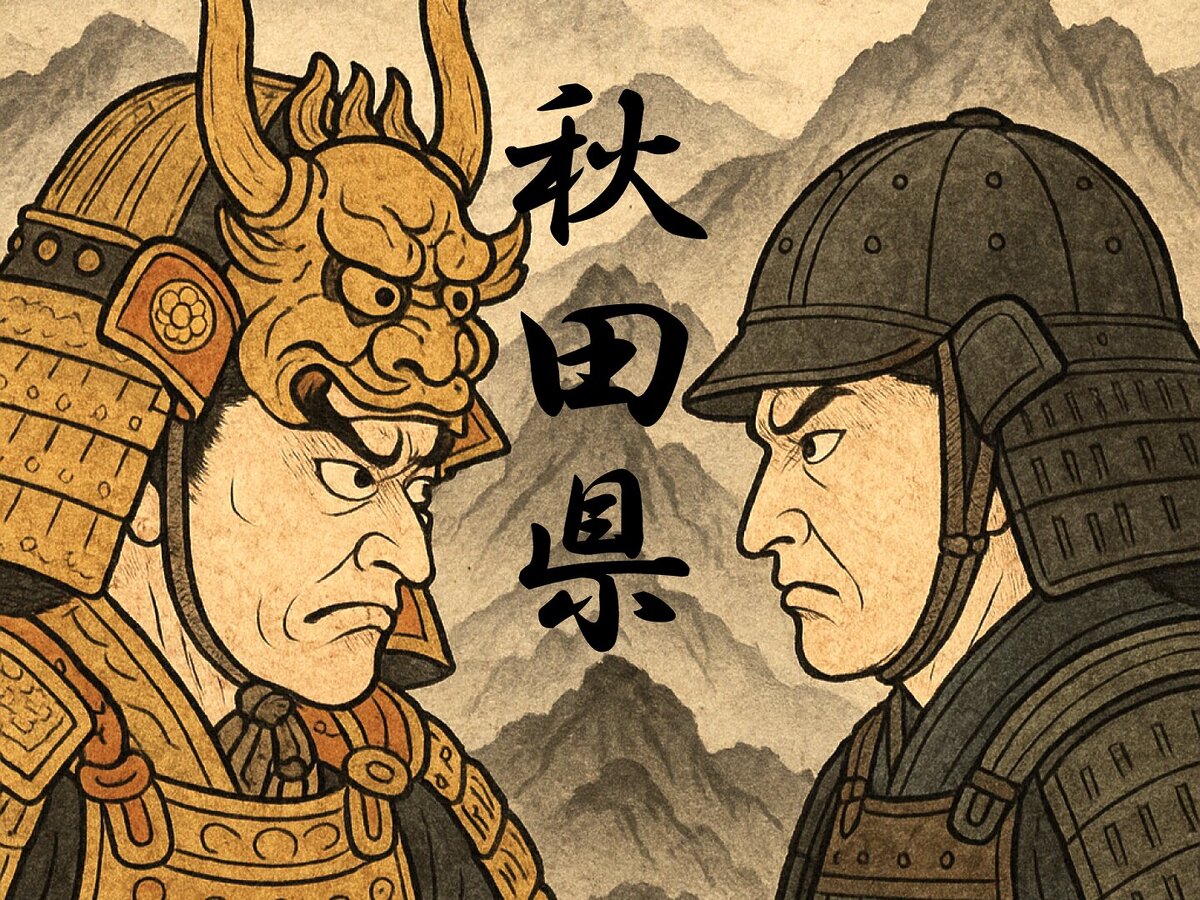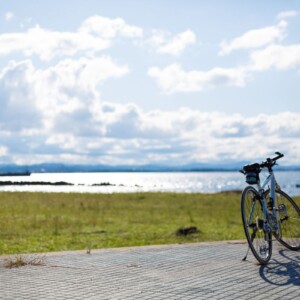
Three Sengoku warlords from Akita Prefecture! Ando Aiki, Tozawa Moriyasu, Onodera Keido
table of contents
- 1 "The Big Dipper of Ugo" by Ando Chikasue (1539-1587)
- 2 "Kikuro, a man of both wisdom and courage" Tozawa Moriyasu (1566-1590)
- 3 "The people of the domain hold a Bon dance to offer prayers for the dead" by Onodera Kagemichi (1534-1597)
- 4 summary
- 5 Famous military commanders from Tohoku and other prefectures
During the Sengoku period, Akita Prefecture was a place of many warlords, and the influence of the central government, including Nobunaga, Hideyoshi, and Ieyasu, was intricately intertwined
Among them, we will introduce three highly regarded military commanders who expanded their territory and were known for their wisdom and bravery
"The Big Dipper of Ugo" by Ando Chikasue (1539-1587)
The Ando clan was a Sengoku period feudal lord whose territory covered nearly half of Akita Prefecture, with Hiyama Castle in Noshiro City and Wakimoto Castle in Oga City as its castles. Aiki unified the Hiyama Ando clan and the Minato Ando clan, expanding their territory to the maximum extent possible, and was praised as a wise and brave military commander, also known as the "Star of the Northern Sky."

He was also skilled in territorial management, developing Tsuchizaki Port (Akita Port) into the largest trading port in northern Japan, and also showed a talent for diplomacy, keeping an eye on the situation in the central government and presenting tributes to Nobunaga, as well as maintaining friendly relations with Hideyoshi
From Ando to Akita
When the Hiyama and Minato families merged, the family name was changed to Akita, as the Minato family had been called "Akita Castle Suke" for generations, and the eldest son, Sanesue, took the Akita name. Incidentally, Akita Castle Suke was the title given to the provincial governor who had exclusive jurisdiction over Akita Castle in Dewa Province
He died of illness in the camp
After unifying the coastal areas of northern Dewa, he invaded inland and fought against Tozawa Moriyasu of Kakunodate, but died of illness in his camp at Senboku Yodogawa (Senboku County, Akita Prefecture)
The Ando clan after Aiki's death
After inheriting the family headship, Sanesue joined the Mogami-Date allied forces on the Eastern side at the Battle of Sekigahara, and took part in the Keicho Dewa War against the Western side, the Uesugi army. However, Sanesue's actions in following Ieyasu's orders were reported to Ieyasu by Mogami Yoshimitsu as a violation of military orders, and his territory was swapped with that of the Satake clan in Hitachi (Ibaraki Prefecture), and he was then transferred to Miharu in Iwaki (Fukushima Prefecture), with the Akita clan remaining as the lords of Miharu Domain until the Meiji era
Hiyama Castle Ruins <Information>
- Name: Hiyama Ando clan castle ruins Hiyama Castle ruins
- Address: Hiyama Kiriyamashita, Noshiro City, Akita Prefecture, 016-0151
- URL: Noshiro City website
Google Map
"Kikuro, a man of both wisdom and courage" Tozawa Moriyasu (1566-1590)
Moriyasu, the 18th head of the Tozawa clan, who is said to be descended from the Kanmu Heishi clan, made Kakunodate Castle his residence

Although he was a general, he was always at the head of the battlefield and was a fierce warrior who would charge into enemy forces alone, earning him the feared nickname "Demonic Dragon." However, he is said to have also shown talent in diplomacy and other areas of strategy, allowed captured enemy soldiers to escape, and was a compassionate general who cared for his subordinates
Disguised as a merchant, he took part in the Odawara campaign
In 1590, when Toyotomi Hideyoshi ordered the Tohoku generals to take part in the attack on Odawara, Moriyasu left Kakunodate and headed for Odawara. However, on the way he passed through the rival territory of Onodera, and it is said that he passed through disguised as a merchant with only a small entourage of six vassals and three foot soldiers
As he traveled west along the Tokaido and arrived at Kanaya-juku (Shizuoka Prefecture), Hideyoshi was in Shimada to the east and they missed each other. Moriyasu, ignoring his retainers' warnings, swollen Oi River and unable to cross, declared, "I must not be late, even by a night," and swam across the river, carrying a lantern
Moriyasu caught up with Hideyoshi and met him, still wet, and Hideyoshi was pleased with Moriyasu's participation in the battle and gave him the Bizen Kanemitsu sword
Moriyasu's untimely death and the Tozawa clan's subsequent
After meeting with Hideyoshi and having his territory confirmed, Moriyasu called for troops and took part in the siege of Odawara Castle, but he suddenly died of illness in the camp at the young age of 25 before the castle fell
Moriyasu's eldest son, Kurogoro, was only four years old, so his younger brother, Mitsumori, succeeded him, but Mitsumori also died two years later. The vassals arranged for Kurogoro to meet Hideyoshi, who approved his succession, and the 20th head of the family, Masamori, was born
The Tozawa forces sided with the Eastern Army in the Battle of Sekigahara and captured castles belonging to the Uesugi clan, but were deemed passive by Ieyasu, and in 1602 they were transferred to Hitachi in exchange for the Satake clan
Kakunodate Castle Ruins <Information>
- Name: Kakunodate Castle Ruins (Komatsuyama Castle Ruins, Furushiroyama)
- Address: Furushiroyama, Kakunodate-cho, Senboku City, Akita Prefecture, 014-1115
- URL: Semboku City website
Google Map
"The people of the domain hold a Bon dance to offer prayers for the dead" by Onodera Kagemichi (1534-1597)
With the support of his family, he recaptured Yokote Castle, his castle that had been taken away when his father was killed in a rebellion by his vassals.He further expanded his power, placing his family members in subsidiary castles such as Nishimonai, bringing the Onodera clan to its peak

He went to Kyoto to meet with Oda Nobunaga, but after his eldest son died of illness, he retired and handed over the family headship to his second son, Yoshimichi, and passed away in 1597
Nishimonai Bon Odori, born from the downfall of the Onodera clan
During Yoshimichi's reign, the generals in the Senboku region who had been following him until then defected and sided with the Western Army in the Battle of Sekigahara, leading to the abolition of his title in 1601 (Keicho 6) and the demise of the Onodera clan
In Nishimonai, which was once the domain of the Onodera clan, the local vassals who settled there after the demise of the clan danced in memory of their lord, and the Nishimonai Bon Dance is said to be a fusion of this traditional dance and traditional dances
Yokote Castle <Information>
- Name: Yokote Castle
- Address: 29-1 Shiroyamacho, Yokote City, Akita Prefecture, 013-0012
- URL: Yokote City website
Google Map
summary
All of the families of the warlords introduced here left Akita, and the Satake clan, who come to mind as the lords of Akita, were the Seiwa Genji clan, the direct descendants of the Hitachi Genji clan
The 19th head of the family, Yoshinobu, remained neutral and did not take part in the Battle of Sekigahara (there is a theory that he allied with Uesugi Kagekatsu of the Western Army), and after the war he was transferred to the Akita/Semboku region and became the lord of the Kubota domain
The Kubota domain (later renamed the Akita domain), which had only 200,000 koku, less than half the 540,000 koku of Hitachi, was forced to run a difficult domain, but it survived until the Meiji period, and the current governor of Akita Prefecture, Satake Takahisa, is the 21st head of the northern branch of the Satake clan, which was divided into four families


















